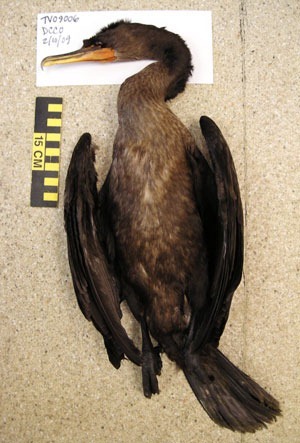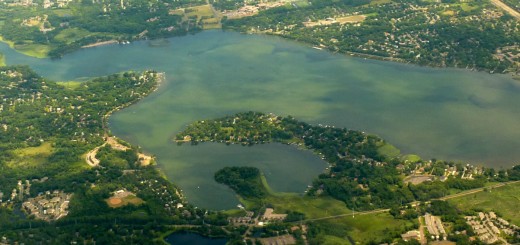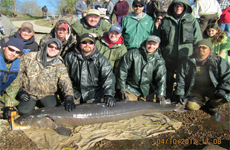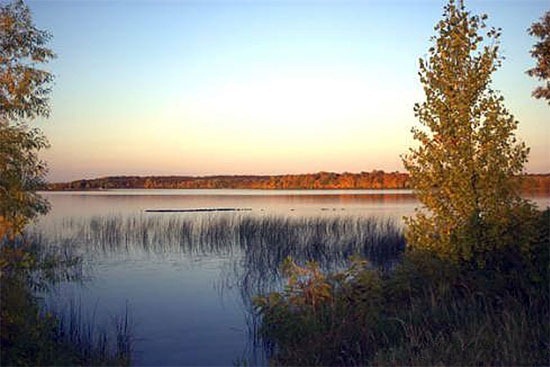Bird die-off on Minnesota lakes linked to Newcastle disease
1
Double-crested cormorant
Thousands of pelicans, cormorants, and gulls on Minnesota lakes have been dying unexpectedly this summer, and biologists suspect the culprit is a virulent strain of Newcastle disease.
Nearly 1,000 gulls, 1,000 pelicans, and 500 cormorants have died on Vermilion, Leech, Lake of the Woods, Wells, and Marsh lakes, according to the Duluth News Tribune. Tests have confirmed the presence of Newcastle in some locations. The specific strain of the disease was identified last week by the National Wildlife Health Center in Madison, Wis.
Results from additional lakes are expected within the next two weeks. Some of the die-offs could alternatively be caused by West Nile disease or avian botulism, though Minnesota DNR wildlife veterinarian Erika Butler said it’s likely Newcastle is responsible in most cases.
In fact, the outbreak closely resembles one that occurred in Minnesota during 2008, when roughly 2,400 birds died from Newcastle at eight different sites. A far more catastrophic outbreak occurred in 1992, when more than 35,000 birds across the Midwest perished from the disease.
Newcastle disease is a single-stranded RNA virus that initially appeared in domestic birds, but its presence in wild birds was first confirmed in 1990. It commonly infects cormorants and is also known to attack other wild birds such as gulls and pelicans, according to the Minnesota DNR. Young birds are the most likely to succumb to the disease.
The virus primarily attacks the nervous system but can affect other organs, such as those in the respiratory system, as well. Infected birds can experience a loss of appetite, muscular tremors, drooping wings or head, twisted neck, lack of coordination, an inability to fly, gasping, coughing, or misshapen eggs. Moreover, some birds can become partially or completely paralyzed as a result of the disease.
Humans are largely unaffected by Newcastle, but exposure can cause mild conjunctivitis and influenza-like symptoms.
State officials incinerate infected corpses using charcoal to eliminate all traces of the disease, which spreads via carcasses and feces. Biologists say they hope the outbreak will subside before large flocks begin to migrate south.
Minnesota has about 39 nesting colonies of double-crested cormorants, according to the Minnesota DNR. Most active nesting sites date back to the 1960s and 1970s.
Viral disease kills thousands of birds on Minnesota lakes [Duluth News Tribune] Bird die-off disease strain identified [Minnesota Department of Natural Resources] Newcastle Disease cause of water bird die-off in Big Stone County [Minnesota Department of Natural Resources]
Image Credit: http://seanetters.files.wordpress.com/2009/03/tv09006dccoventrum1.jpg














I hope the outbreak subsides soon. Sounds like they are doing all they can to contain it.